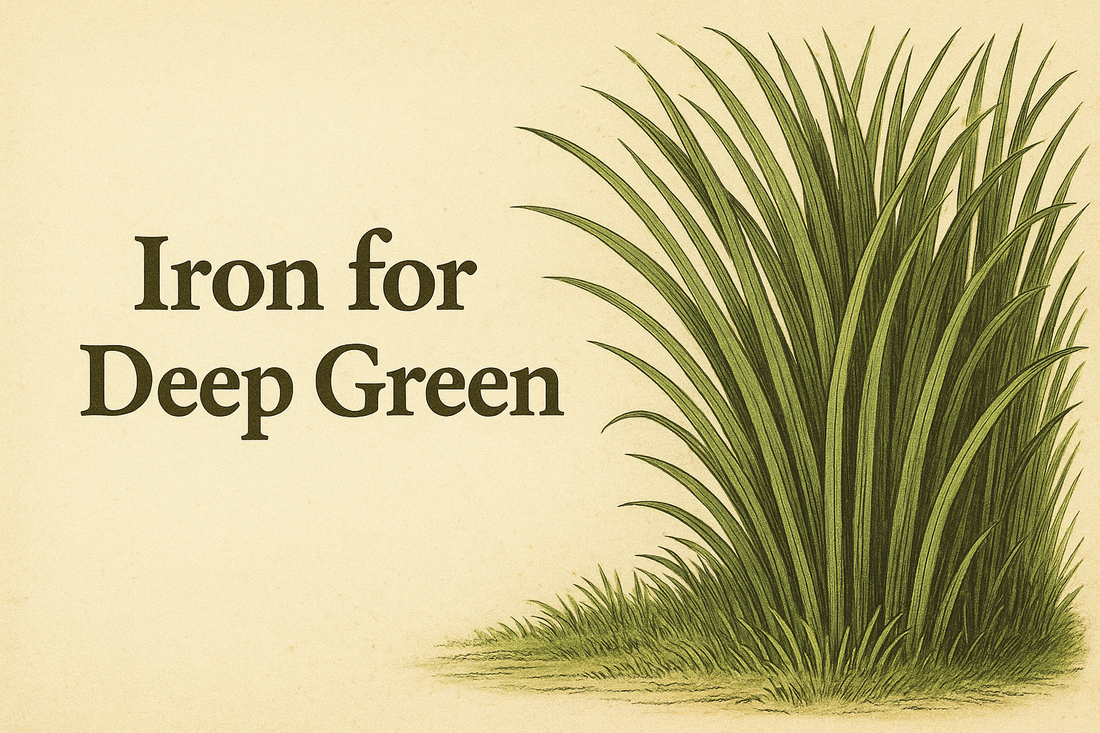
Iron: The Fastest Way to Deepen Lawn Color Without Extra Mowing
Share
Why chlorophyll depends on iron
Iron atoms sit at the center of every chlorophyll molecule. When soil iron slips out of reach—usually in alkaline conditions—blades turn a washed-out yellow-green even while nitrogen remains plentiful. Adding more N only forces lanky growth that still looks dull.
Four clues your grass lacks iron
- New leaves appear chartreuse while older blades stay darker
- Color fades first on the sunniest areas, then across the lawn
- Mowing height or watering routine hasn’t changed, yet turf loses its spring texture
- Soil pH test reads 7.4 or higher, a range that locks iron into insoluble forms
Product spotlight: Dark Venom 3-0-5 with iron
- Chelated iron remains available even when pH is high
- Low nitrogen keeps growth in check; no extra clipping volume
- Potassium supports heat tolerance during mid-season stress
Mixing rate
3 oz per 1 000 sq ft in one gallon of water. Spray on damp turf, then rinse for five minutes to carry nutrients into the thatch layer.
Two-pass program for stubborn cases
- First application in early morning for quick uptake
- Second application ten days later if color hasn’t reached the desired depth
This staggered approach prevents over-application while letting you fine-tune hue.
Common mistakes that blunt iron response
- Spraying during midday heat—stomata close and absorb less
- Pairing iron with hard well water—high calcium ties up the mineral before it reaches roots
- Mixing iron with high-phosphorus products—phosphate ions precipitate iron, wasting both nutrients
One myth to drop
“More nitrogen means darker grass.” In reality, excess nitrogen pushes soft, water-demanding growth. A precise iron dose gives darker color and lets the mower stay in the shed a little longer.
Apply Dark Venom as directed, monitor color over ten days, and you’ll see a richer hue that survives the next trim instead of ending up in the grass catcher.
